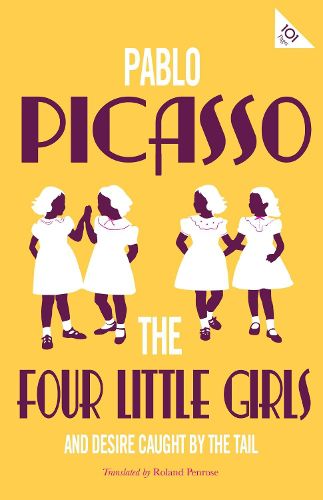Readings Newsletter
Become a Readings Member to make your shopping experience even easier.
Sign in or sign up for free!
You’re not far away from qualifying for FREE standard shipping within Australia
You’ve qualified for FREE standard shipping within Australia
The cart is loading…






In the 1940s, Picasso wrote two plays in French: the first, Desire Caught by the Tail, was conceived during the German occupation of Paris and features a cast of grotesque allegorical characters such as the Onion, Silence or Fat Anxiety discussing the crucial wartime themes of hunger, cold and love; the second, The Four Little Girls, came about a few years after the end of the war on the French Riviera, and presents the stream-of-consciousness thoughts of four unnamed girls in a vegetable garden, revealing an unexpectedly evil aspect of childhood.
These surreal compositions, which were meant to be read aloud rather than formally staged, are a testament to the great artist’s imaginative powers, and have been considered as forerunners to the theatre of the absurd of the 1950s, as exemplified by Beckett, Ionesco and Adamov. This volume also contains the accompanying illustrations by Picasso himself.
$9.00 standard shipping within Australia
FREE standard shipping within Australia for orders over $100.00
Express & International shipping calculated at checkout
In the 1940s, Picasso wrote two plays in French: the first, Desire Caught by the Tail, was conceived during the German occupation of Paris and features a cast of grotesque allegorical characters such as the Onion, Silence or Fat Anxiety discussing the crucial wartime themes of hunger, cold and love; the second, The Four Little Girls, came about a few years after the end of the war on the French Riviera, and presents the stream-of-consciousness thoughts of four unnamed girls in a vegetable garden, revealing an unexpectedly evil aspect of childhood.
These surreal compositions, which were meant to be read aloud rather than formally staged, are a testament to the great artist’s imaginative powers, and have been considered as forerunners to the theatre of the absurd of the 1950s, as exemplified by Beckett, Ionesco and Adamov. This volume also contains the accompanying illustrations by Picasso himself.